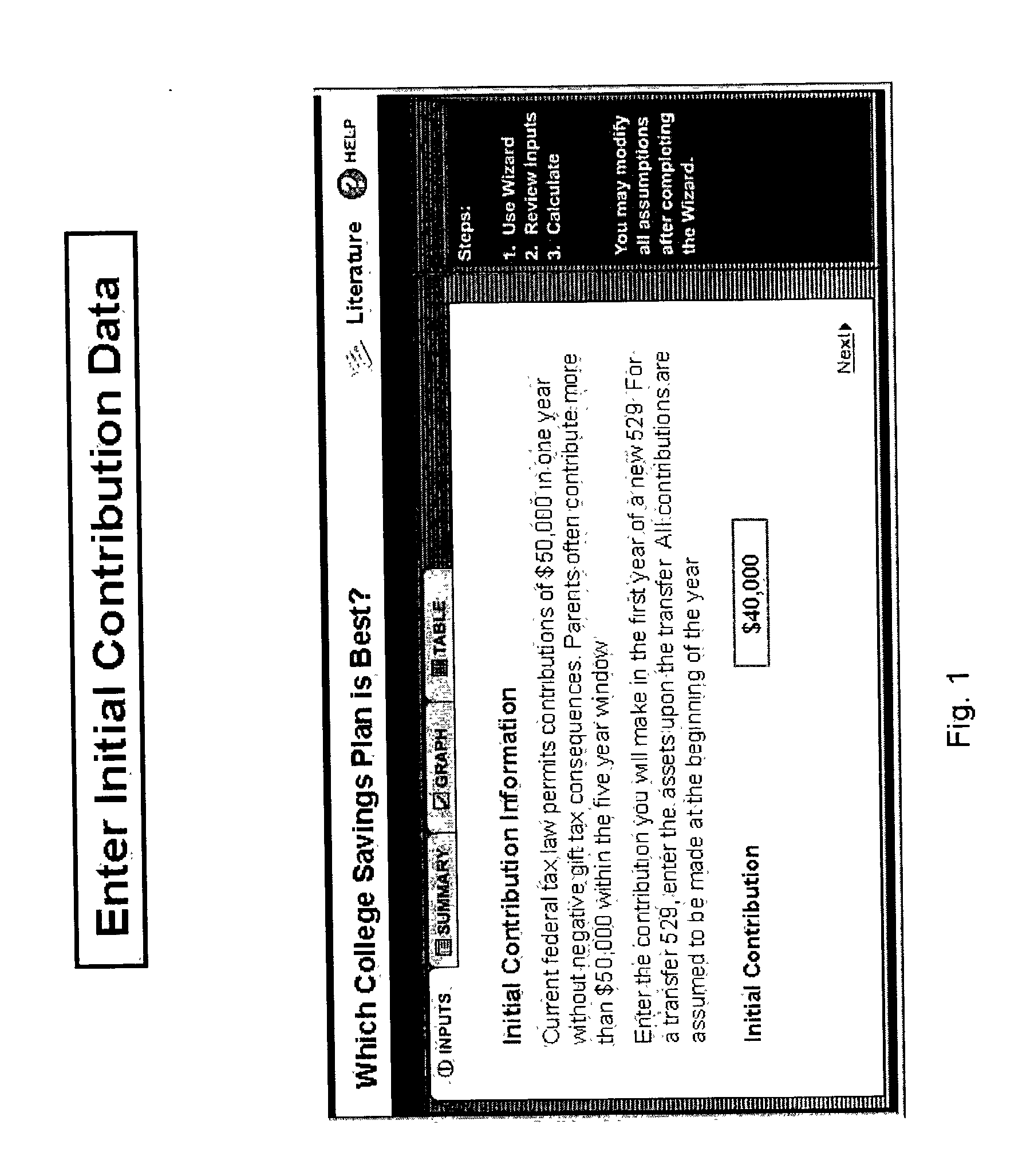Tool for analyzing investment plans
a technology for investment plans and investment plans, applied in the field of investment plans, can solve the problems of many possibilities, which is, obviously, very important, but also very difficult, and cannot be fully customized to the specific needs and goals of investors, and perform comparisons of different investment vehicles, in particular comparisons closely tailored to their financial, tax and/or estate situation,
- Summary
- Abstract
- Description
- Claims
- Application Information
AI Technical Summary
Benefits of technology
Problems solved by technology
Method used
Image
Examples
example 2
Calculation of Tax Rates, Generally
[0046] The program employs current federal and state tax tables. Using the taxable income figure derived for the user (Example 1), it determines the investor's marginal state and federal tax brackets. It then estimates taxes due under the various investment strategies. Regularly updating the program in accordance with changing federal and state tax laws, as well as the ability of the program to account for increases or decreases in income, allows for the adjustments to be made where the investor moves to higher or lower tax brackets. Upward tax bracket "creep" may result, for example, when withdrawals are included in annual income or AGI (another feature unique to the inventive analysis tool).
[0047] Federal Taxes: The analysis tool assumes that state and federal tax treatments are similar for most sources of income and types of deductions, while at the same time recognizing differences such as state taxes being deductible on federal returns but not...
example 3
Analysis of Investment Plans for College Education
[0049] The inventive investment analysis tool may be used to analyze virtually all types of investment plans. A major use for this tool is in connection with analyzing college savings plans. Thus, this Example, as well as Examples 4-8, relate to the following fact pattern, which is typical investment issues facing many parents saving for college.
[0050] A four year private education is projected to cost $250,000 in future dollars (17 years from today) for a child born today. The investor is in the 30% marginal federal tax bracket and 4% marginal state tax bracket. For the sake of simplicity here, it is assumed that the investor's income and tax rates do not change in the future. Assume also that investment return averages 10% per year, and that the investor can invest a one-time sum of $50,000. The investor wishes to determine whether it is more advantageous to invest for college in a variable annuity or in a 529 plan.
[0051] Investor-...
example 4
Tax Rate
[0053] Starting with the facts of Example 3, assume also that the investor itemizes his or her deductions on the federal return. Thus, state taxes are deductible on the federal return. The effective tax rate on gains is then: (1-state rate)*federal rate+state rate=(1-0.04)*0.30+0.04=32.8%. Note that it is not simply the sum of the two rates, or 34%.
PUM
 Login to View More
Login to View More Abstract
Description
Claims
Application Information
 Login to View More
Login to View More - R&D
- Intellectual Property
- Life Sciences
- Materials
- Tech Scout
- Unparalleled Data Quality
- Higher Quality Content
- 60% Fewer Hallucinations
Browse by: Latest US Patents, China's latest patents, Technical Efficacy Thesaurus, Application Domain, Technology Topic, Popular Technical Reports.
© 2025 PatSnap. All rights reserved.Legal|Privacy policy|Modern Slavery Act Transparency Statement|Sitemap|About US| Contact US: help@patsnap.com



